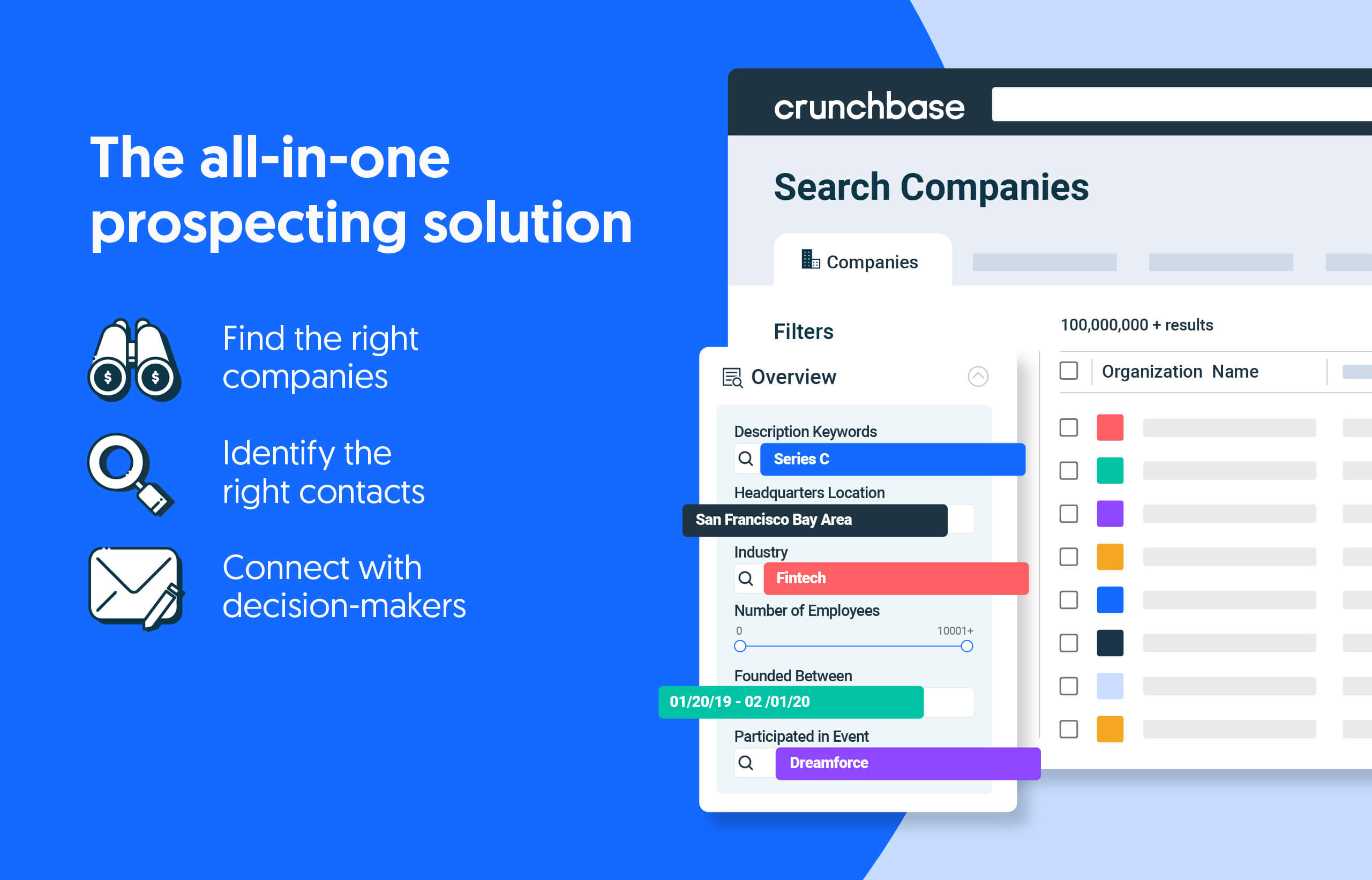For the second quarter in a row, the Asia venture market declined—following in lock-step what is going on globally.
Search less. Close more.
Grow your revenue with all-in-one prospecting solutions powered by the leader in private-company data.
The second quarter of 2022 saw a 19% decline when compared to the first, and a 20% drop from the same quarter in 2021. Funding to startups in the region hit $28.1 billion, a significant decline from the $51.5 billion raised in just the final quarter of last year. It also is the lowest total since the first quarter of 2020.
Deal flow also took a hit for a second consecutive quarter, with only 1,513 funding rounds announced—down 20% from the first quarter and 11% from last year’s second quarter. It also represents a major decrease from the high of 2,246 deals closed in the fourth quarter last year.
While it is important to note 2021 was a record year for the continent, all levels of funding—from seed to late and tech growth rounds—saw a decline in total dollars even from Q1.
Late stage drops again
Not surprisingly, larger late rounds saw the biggest declines—a trend that is happening globally as valuations fall and investors are leery of dropping big money after significant losses in their portfolios.
In Q2, late and tech growth rounds totaled $15.7 billion—a whopping 23% drop quarter to quarter and an even more staggering drop of 35% from the second quarter last year.
To put that drop in further perspective, more than $34 billion was invested in such rounds in both the third and fourth quarters last year—a clear signal that the venture market in Asia is well off the highs of 2021.
The drop in value corresponded with a drop in the number of later-stage deals. The second quarter saw only 200 such deals announced, down 26% from the first quarter and 13% for the same quarter last year.
The record fourth quarter last year saw more than 350 deals announced.
Early stage stays steady
While investors seemingly couldn’t pull back fast enough from late-stage deals, early-stage funding stayed relatively consistent—all things considered.
The quarter saw $10.5 billion flow into early-stage deals, down 13% from the first quarter, but actually up 7% from the second quarter of 2021. That number is down from $17.1 billion just two quarter ago, but overall the amount is on par with past quarters.
Deal flow also remained pretty stagnant, with 605 early-stage deals announced in Asia. That number was down just 1% from the first quarter of the year and an increase of 16% from the second quarter of last year.
Seed and angel dollars up, deal flow down
The very earliest type of funding—seed and angel—actually increased year to year. However, as it is the smallest in terms of value it was not enough to crutch up overall numbers for the region.
Seed and angel funding hit $1.9 billion in Q2—down 7% from Q1, but up an astounding 46% from last year’s second quarter.
Flow of those types of deals, however, suffered severely. The second quarter saw just over 700 seed and angel deals, down 29% from the previous quarter and 25% year to year. The previous two quarters saw more than 1,000 such deals close.
Who took the biggest hit?
The country that saw the biggest hit to VC funding was not surprisingly also the biggest—China. Chinese VC-backed startups saw their take of money plummet from $27.6 billion in Q4 2021 to just $9.3 billion in Q2 2022.
While most countries in Asia showed a decline in funding, many held at least close to their first-quarter numbers. India—the region’s second-largest VC market behind China—saw funding only drop from $9.9 billion in the first quarter of the year to $8.6 billion in the second.
Japan, on the other hand, actually saw a quarter-to-quarter jump, from $600 million to $1 billion—which is surprising since Japan’s economy was sputtering even before the current economic swoon.
Exits
Just as the IPO pipeline has run dry in the U.S., startups in Asia also are not looking for a public market exit right now. That is understandable considering the economy across the globe and the falling public markets. Just barely more than a dozen Asia-based, VC-backed startups went public in Q2 on a variety of both Asian and oversea exchanges. Some of the notable IPOs include:
- Indonesia-based ride-hailing and food delivery service GoTo Group raised $1.1 billion in its April IPO.
- Hong Kong-based biotech firm Prenetics went public on Nasdaq after it raised $260 million in a SPAC deal in May.
- Taiwan-based electric scooter company Gogoro also went public on Nasdaq after a SPAC merger in April that raised $335 million.
M&A deals stayed strong in the region, with about 80 transactions announced in the quarter—similar to Q1. The three biggest deals in terms of dollars were:
- Qualcomm bought Israel-based automation platform developer Cellwize for $300 million in June.
- Ascential acquired Singapore-based e-commerce developer Intrepid Group Asia for $250 million in June.
- Adani Ports bought India-based port operation services provider Ocean Sparkle for approximately $214 million in April.
Takeaways
Asia’s funding numbers did not take as big a hit as North America’s did, but that’s not unusual as it is a less mature market. In general, it showed the same downward trend that is being witnessed globally.
The decline in funding to China-based startups pushed numbers down significantly for the region. There is little reason to expect that to change. While China has seemed to warm slightly more to tech this year, the sector could face other headwinds.
A bipartisan set of congressional lawmakers are reconciling two bills that propose heightened government screenings of American investments in China in an effort to make the U.S. more competitive economically. Additionally, China’s crackdown on many of its tech companies with added antitrust and data rules last year may have cooled investors’ eagerness to get into the second-largest VC market in the world.
That is all on top of the fact the region—like many—is still dealing with a COVID pandemic that never seems to end and continues to cause more disruptions to the supply chain.
While the numbers being down from last year’s record fundraising is likely not too disconcerting to investors now, the question remains: When will the decline level off?
Methodology
The data contained in this report comes directly from Crunchbase, and is based on reported data. Data reported is as of July 5, 2022.
Note that data lags are most pronounced at the earliest stages of venture activity, with seed funding amounts increasing significantly after the end of a quarter/year.
All funding values are given in U.S. dollars unless otherwise noted. Crunchbase converts foreign currencies to U.S. dollars at the prevailing spot rate from the date funding rounds, acquisitions, IPOs and other financial events are reported. Even if those events were added to Crunchbase long after the event was announced, foreign currency transactions are converted at the historic spot price.
Glossary of funding terms
Seed and angel consists of seed, pre-seed and angel rounds. Crunchbase also includes venture rounds of unknown series, equity crowdfunding and convertible notes at $3 million (USD or as-converted USD equivalent) or less.
Early stage consists of Series A and Series B rounds, as well as other round types. Crunchbase includes venture rounds of unknown series, corporate venture and other rounds above $3 million, and those less than or equal to $15 million.
Late stage consists of Series C, Series D, Series E and later-lettered venture rounds following the “Series [Letter]” naming convention. Also included are venture rounds of unknown series, corporate venture and other rounds above $15 million.
Technology growth is a private-equity round raised by a company that has previously raised a “venture” round. (So basically, any round from the previously defined stages.)
Illustration: Dom Guzman

Stay up to date with recent funding rounds, acquisitions, and more with the Crunchbase Daily.









67.1K Followers